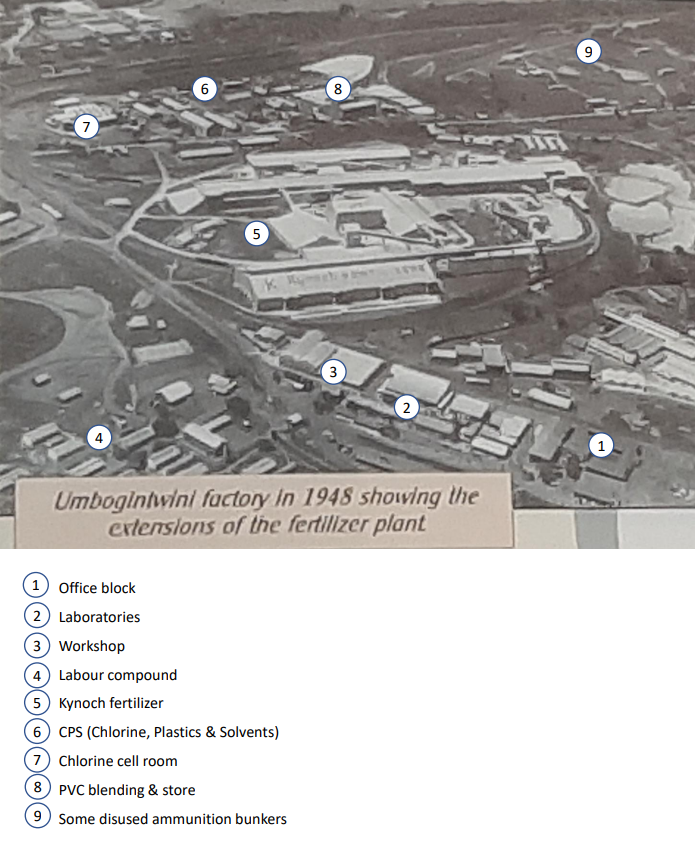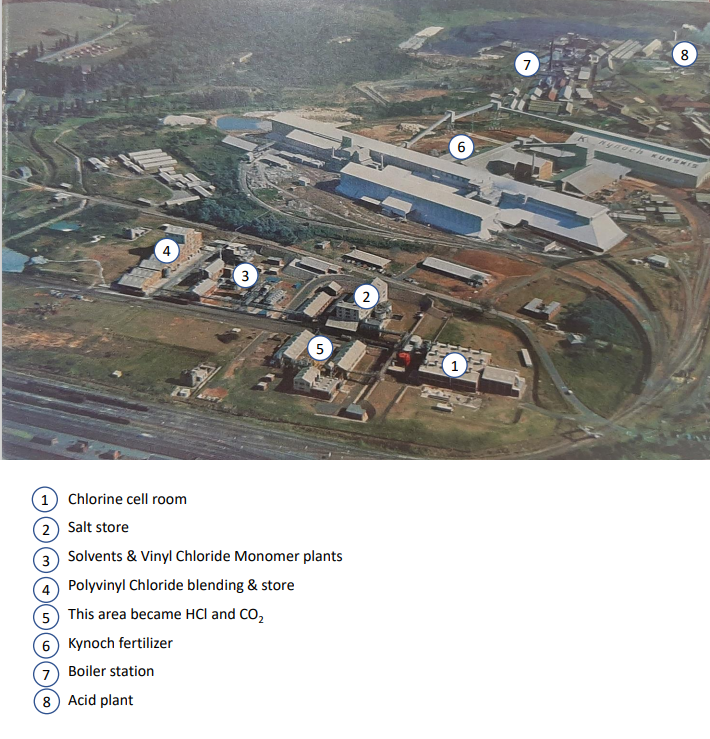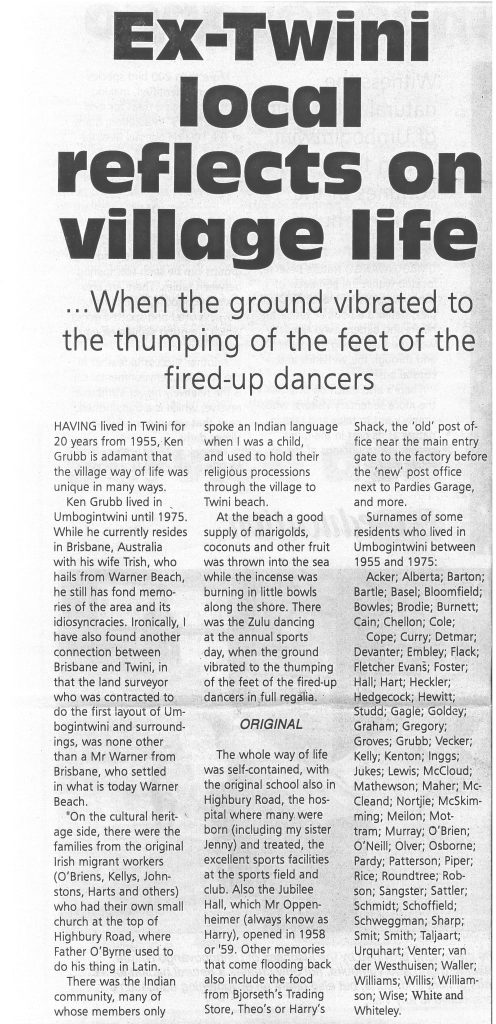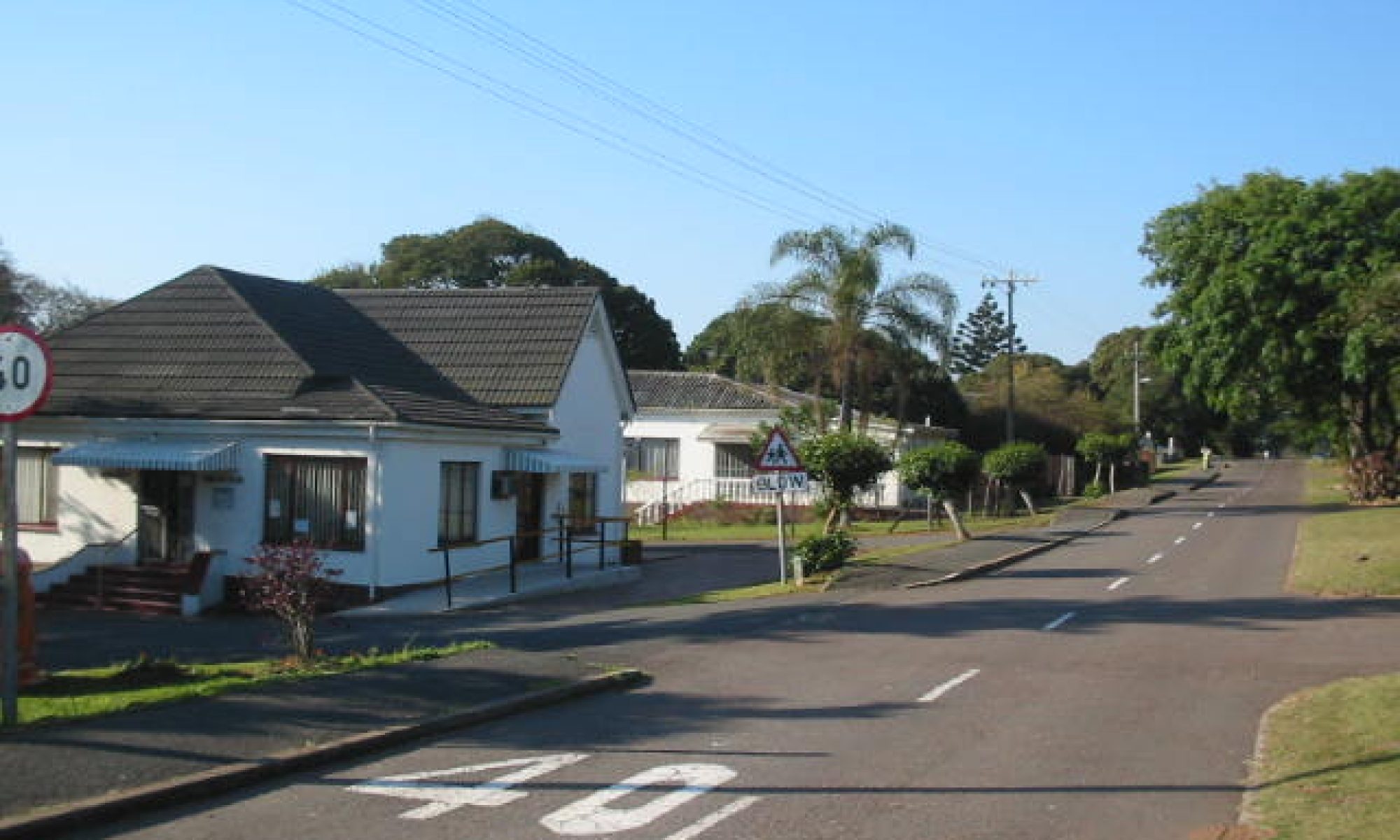The factory and village came about as a result of Mr Arthur Chamberlain (uncle of British PM Neville Chamberlain) seeing an opportunity to supply explosives to the South African gold mines at a cheaper rate than he could supply from the Kynochs factory in Arklow in Ireland. Mr Kynoch had resigned by then and Mr Chamberlain became Chairman. The Natal Government in 1907 (prior to Union in 1910) granted the company a lease on 1,400 acres (566 hectares) of land Twini which was originally part of a reserve. Clearing of the land even included the use of Indian elephants with their Indian mahouts.

Reference: Modderfontein Museum
Building locations by Mike Mulholland
The factory, originally known as Kynochs Ltd, was set up to produce explosives as well as chemicals including nitric and sulphuric acid needed in the production of the explosives. The factory came into production in 1908. The name changed to African Explosives and Industries in 1924 before the ramping up of the production of explosives during WWII when the Royal Navy maintained a presence when purpose-built double storey houses for the officers were constructed, with some porthole windows on the lower levels, in Highbury Road.
The production of phosphatic fertilizer became progressively more important until that component of manufacture passed to the Modderfontein plant in the 1960s, by which time (1966) the operation had become known as African Explosives and Chemical Industries, one of the many subsidiaries of the Anglo American empire. The nitrogen plant, the tioxide plant and the perspex plant also came into production in the late 1960s. The factory remained under the single AECI umbrella in those days. Messrs Flack, Rice, Pike and Inggs were the factory managers during my time.

Reference: Modderfontein Museum
Circa 1960 building locations by Mike Mulholland
Explosions at the factory were not uncommon and on one occasion a monkey also jumped into the sub-station near the factory entry gate resulting in a huge flame and explosion that shook the whole district. The weekly air raid siren fire practice, which could be heard throughout the village, was quite spine-chilling. Tanker loads of sulphuric acid going to Saicor at Umkomaas for the production of rayon were a regular sight along Oppenheimer Road beyond the bottom of our garden and the calendars supplied to employees in the 1960s were high quality prized items.
The South Coast Sun supplement of 3 July 2008, covering 100 years of the Umbogintwini Industrial Complex, provides some interesting further information on the factory and village. The supplement includes a photograph of the staff house in the village.
 Reference: South Coast Sun, 3 July 2008
Reference: South Coast Sun, 3 July 2008
